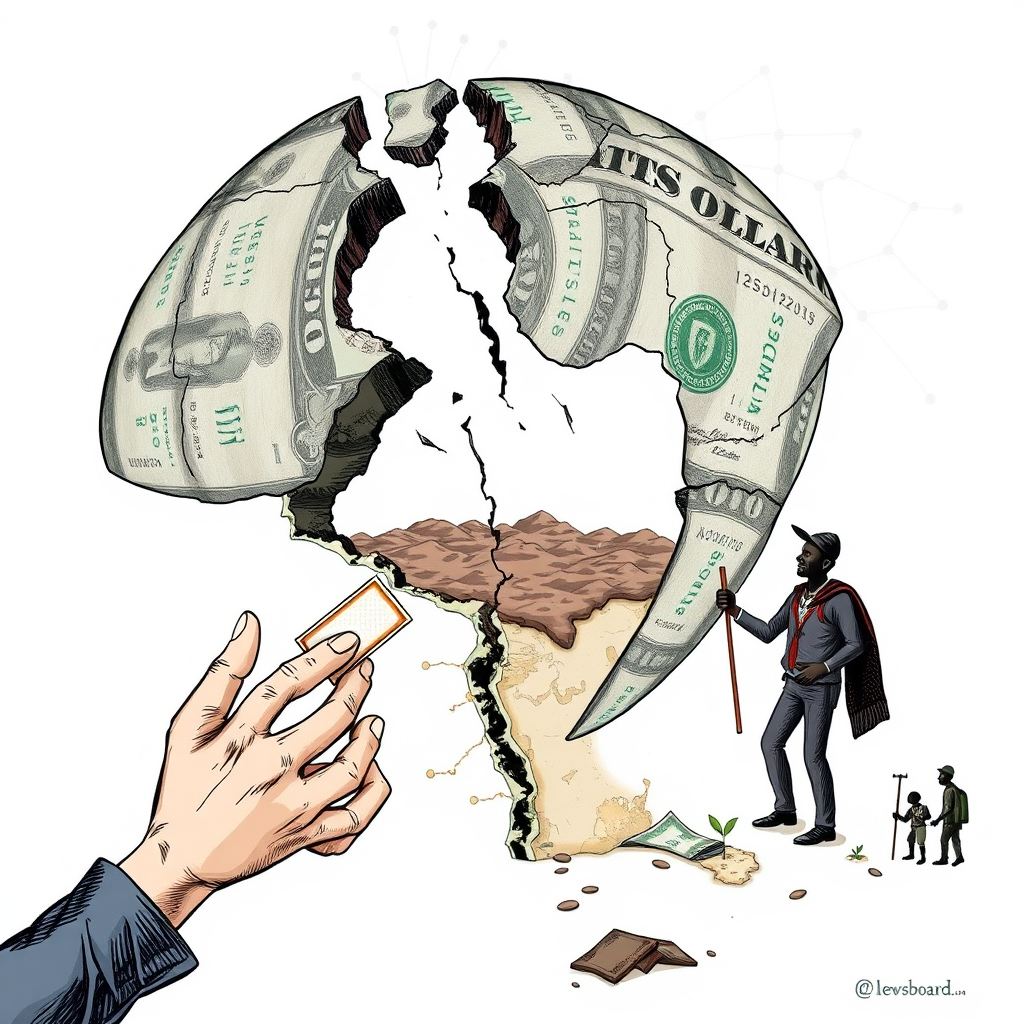Foreign Aid Is Broken—Here's How to Fix It.

The recent pronouncement by Elon Musk, then head of the Department of Government Efficiency, that USAID should “die,” signaled a dramatic shift in the conversation surrounding U.S. foreign aid. While seemingly motivated by partisan politics – the vast majority of USAID personnel’s campaign contributions favored Democrats – the Trump Administration’s subsequent decision to slash nearly 90% of USAID programs had far-reaching implications for global development, impacting areas from civil society and education to healthcare and infrastructure.
However, the debate extends beyond simply preserving or dismantling an agency. Decades of aid have yielded mixed results, often failing to address systemic issues and, in some cases, exacerbating existing inequalities. Traditional aid models, frequently tied to stringent “conditionalities” imposed by institutions like the World Bank and IMF – demands for austerity, privatization, and trade liberalization – have been criticized for hindering genuine progress.
A common misconception is that a substantial portion of U.S. aid directly benefits recipient nations. In reality, foreign aid constitutes a relatively small fraction – roughly 1% – of the U.S. federal budget, and a significant portion is channeled back into the U.S. economy through contracts awarded to American companies. This “tying” of aid, while benefiting domestic businesses, raises questions about its true impact on recipient countries.
The landscape of foreign aid is also shifting. Over the past two decades, China has emerged as a major player, surpassing the U.S. in aid-like investments by a considerable margin. Unlike traditional Western aid, Chinese assistance often comes without the same political or economic conditions, offering an alternative model for developing nations. India, Turkey, and Brazil are also increasing their South-to-South aid contributions, further diversifying the options available to recipient countries.
Increasingly, concerns are being raised about “spillovers” – the negative impacts of developed nations’ policies on developing countries. The U.N. is now monitoring these spillovers, which hinder progress towards the Sustainable Development Goals. The U.S., in particular, generates substantial negative spillovers, and its aid programs do little to address them. The Trump Administration’s rejection of the SDGs only underscored this disconnect.
One of the most significant spillovers is the drain of wealth from poorer to richer nations. Studies estimate that over $62 trillion has flowed from developing countries since 1960 – a figure far exceeding Western aid contributions. While some of these flows are legitimate, a substantial portion consists of “rents” – value extracted through unfair political and legal advantages. Even proponents of free trade and globalization, like economist Lawrence Summers, acknowledge this imbalance.
The current system is further complicated by policies that limit revenue collection in developing countries, hindering their ability to become self-reliant. The IMF’s emphasis on building international currency reserves, effectively low-interest loans to the U.S., also diverts funds from domestic investment and public services.
A few donors, like Norway, are beginning to address these spillovers, advocating for policy changes to stop tax evasion and illicit financial flows. The call to help poorer countries exit aid dependency by mobilizing domestic revenues is gaining traction.
Angus Deacon, a Nobel laureate in economics, argues that developed nations should focus on dismantling the structures that perpetuate poverty. This means addressing harmful spillovers and abandoning counterproductive aid conditionalities. Rather than eliminating aid agencies, as the Trump Administration proposed, a more effective approach would be to tackle the root causes of wealth extraction, as advocated by John Maynard Keynes nearly a century ago.
In my view, a fundamental shift in perspective is needed. Foreign aid, as currently structured, often serves the interests of donor nations more than those of recipients. A truly effective approach requires addressing systemic inequalities, dismantling exploitative structures, and empowering developing countries to chart their own paths to sustainable development. It’s not simply about giving aid; it’s about creating a more just and equitable global system.